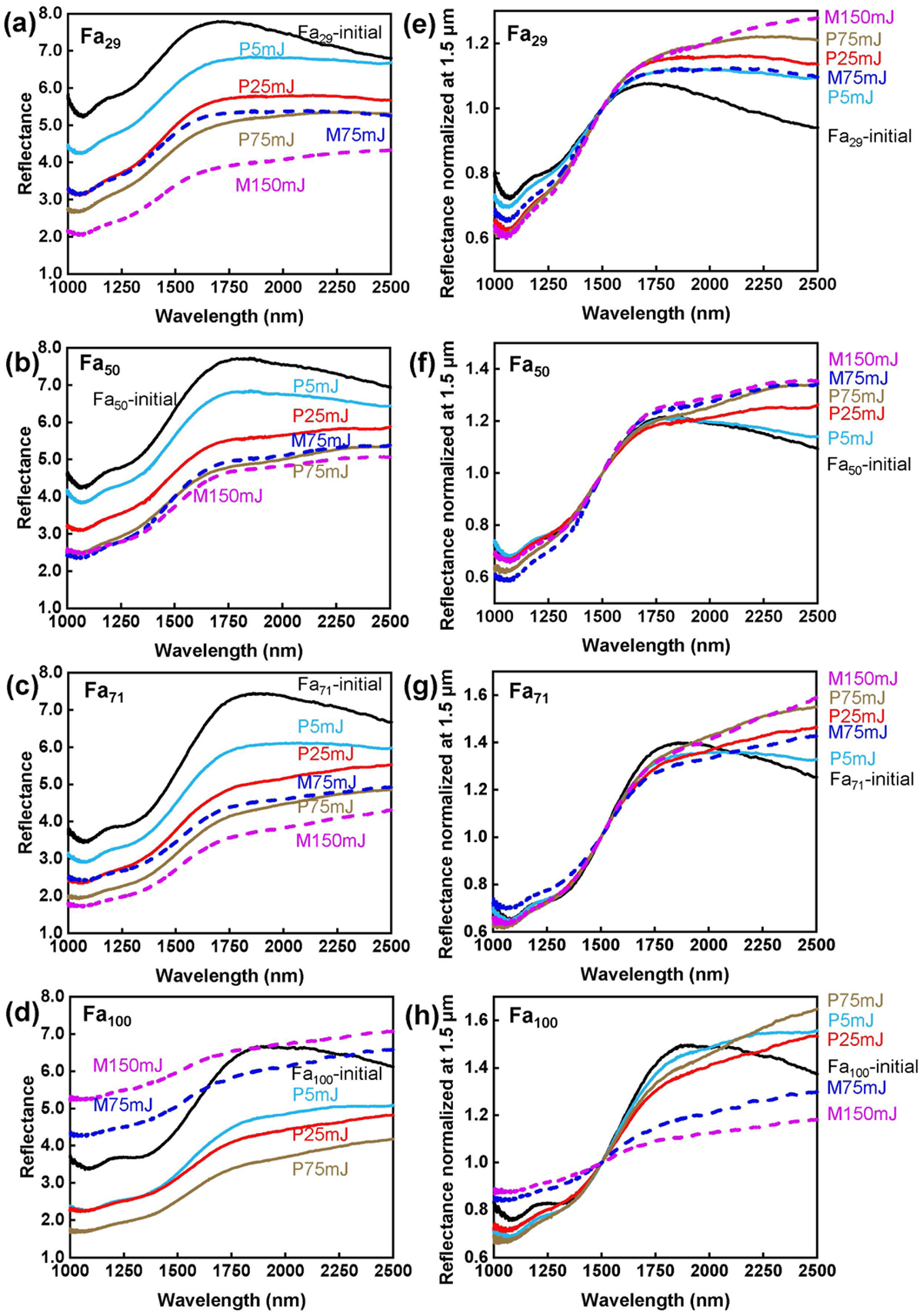Fig. 7

Download original image
NIR reflectance spectra of the Fe-rich olivine before and after laser irradiation in this study. The left column presents the NIR spectra of four types of Fe-rich olivine, and the right column presents the spectra but normalized at 1500 nm for comparison. Images (a) and (e) Fa29; (b) and (f) Fa50; (c) and (g) Fa71; and (d) and (h) Fa100. In each subfigure, the black solid line represents the spectra of the initial olivine; colored solid lines represent irradiated olivine simulating Phobos conditions, P5mJ (teal), P25mJ (red), and P75mJ (brown); colored dashed lines represent irradiated olivine simulating lunar conditions, M75mJ (blue) and M150mJ (purple). In general, most irradiated olivine samples demonstrate a decrease in reflectance (i.e., darkening) compared to the initial olivine and an increase in the R2400/R1900 spectral slope (i.e., reddening). Exceptions occur in Fa50 and Fa100 under M75mJ and M150mJ conditions. Fa50 shows no further reddening under the M150mJ condition compared to that under the M75mJ condition. Fa100 shows an inversed pattern, with an increase in reflectance (i.e., brightening) and a lower extent of reddening under M75mJ and M150mJ conditions compared to those under P5mJ to P75mJ conditions. Attenuation of absorption occurred in all the irradiated samples.
Current usage metrics show cumulative count of Article Views (full-text article views including HTML views, PDF and ePub downloads, according to the available data) and Abstracts Views on Vision4Press platform.
Data correspond to usage on the plateform after 2015. The current usage metrics is available 48-96 hours after online publication and is updated daily on week days.
Initial download of the metrics may take a while.


